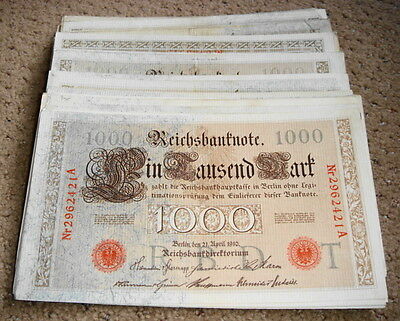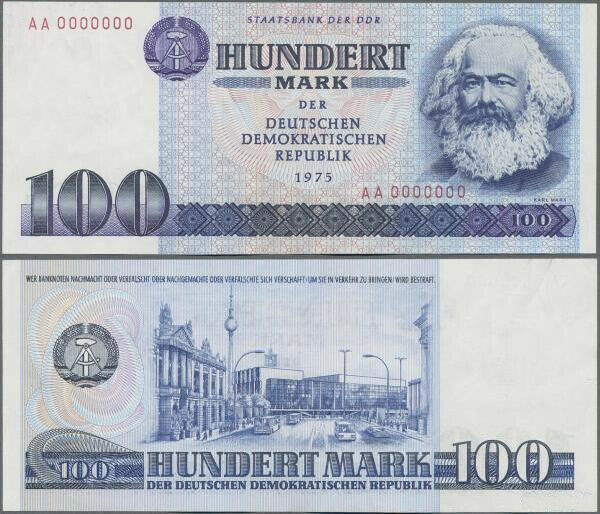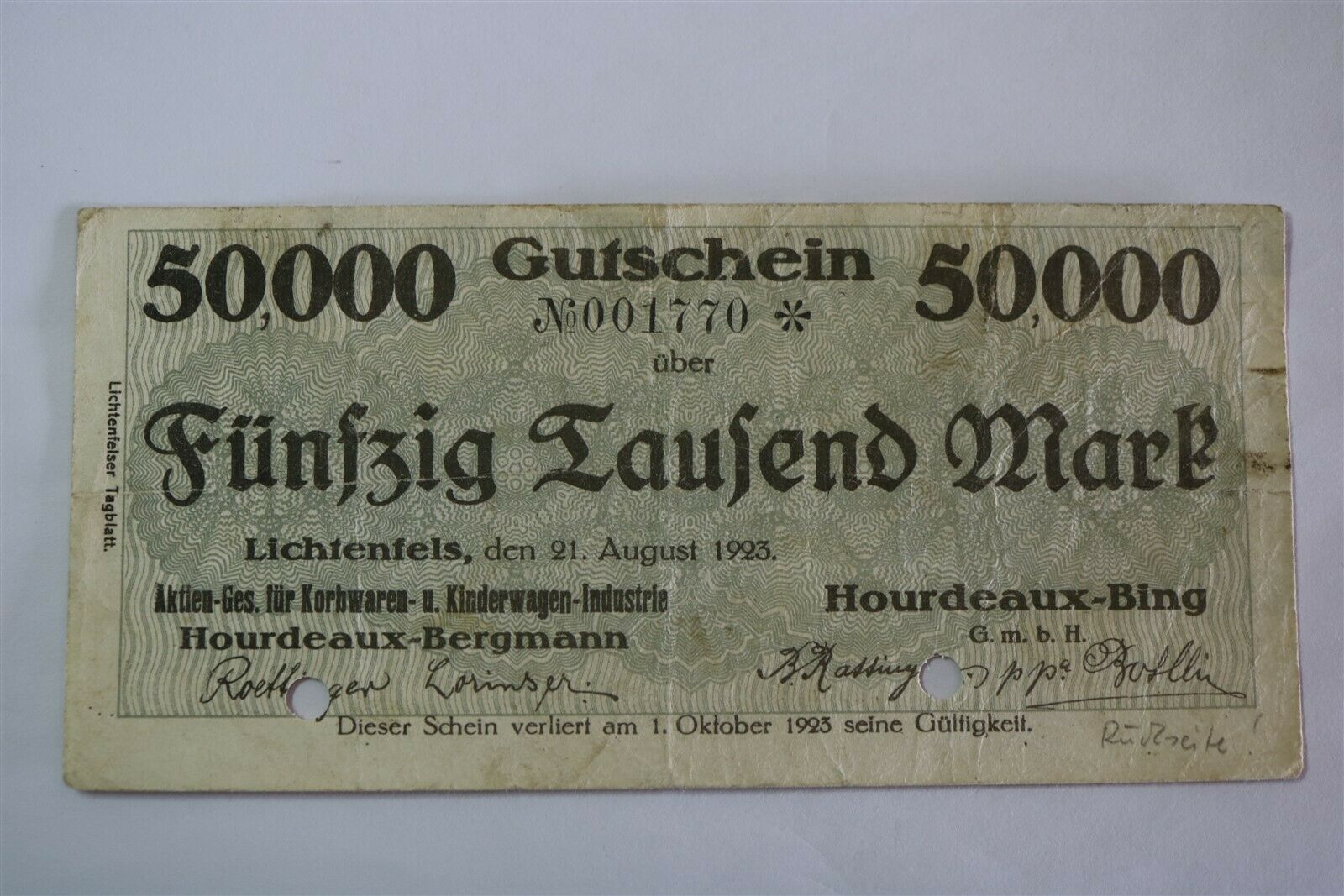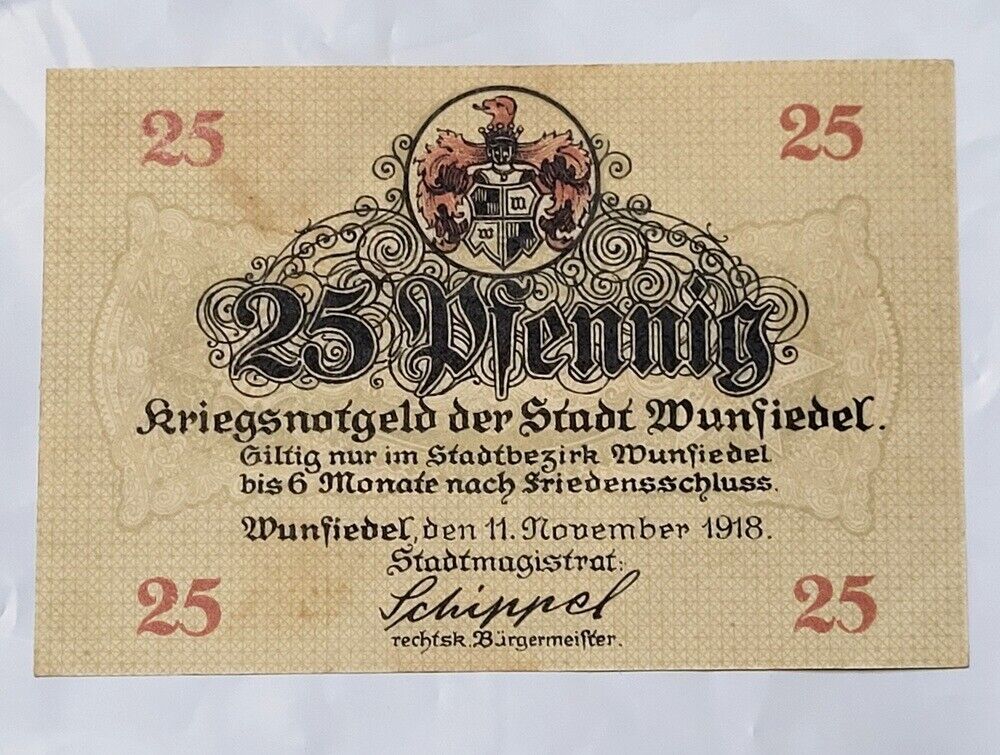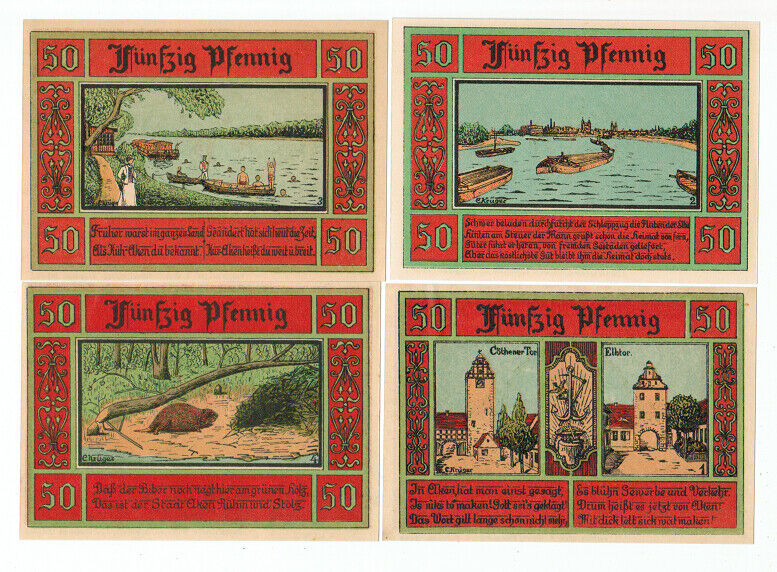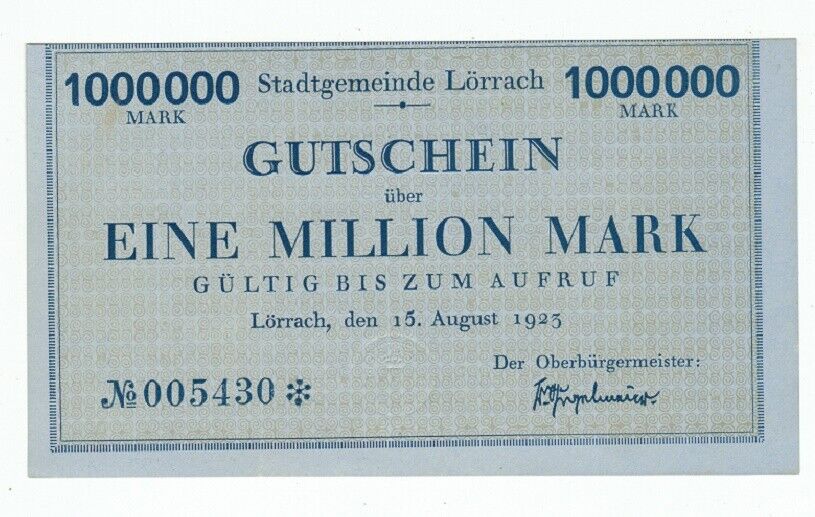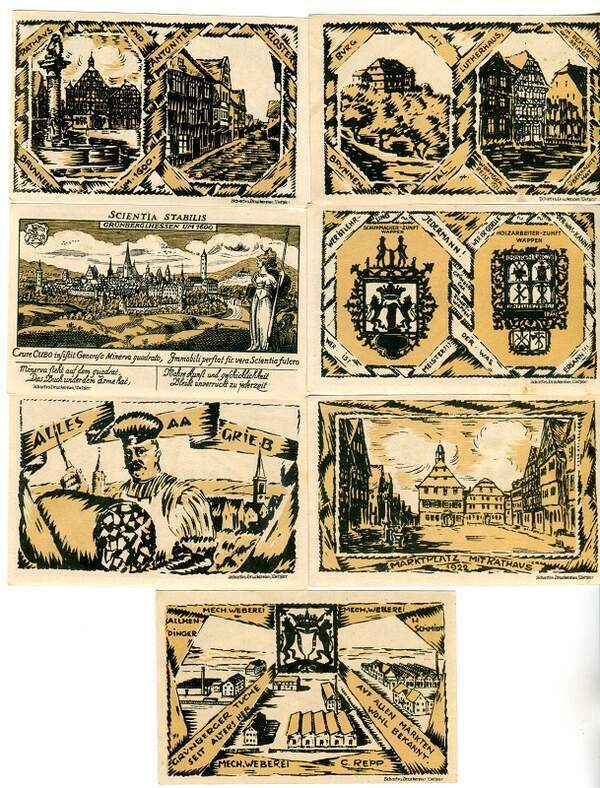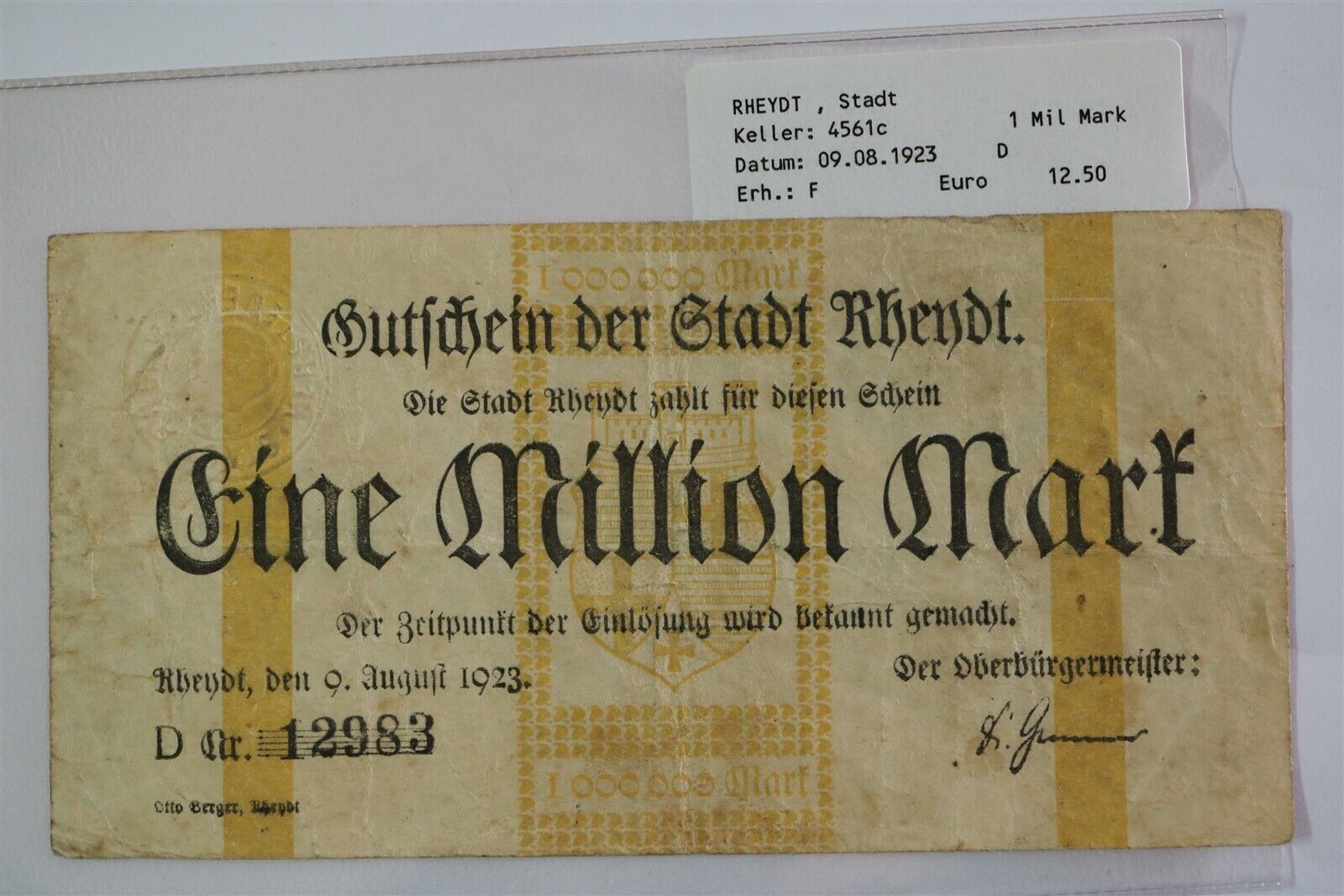-40%
COLORFUL ORNATE 1920 NOTGELD of TOWN WHERE ALL JEWS WERE MASSACRED Read History!
$ 7.91
- Description
- Size Guide
Description
BEAUTIFUL RARE NOTGELD w a DARK HISTORYThe town of Deggendorf lies on the Danube River on the edge of the central Bavarian forest. In 1920 the town issued the two offered 25 and 50 Pfennig Notgeld notes. This is a rare complete set of both denominations in Crisp Uncirculated condition.
These exquisitely colorful, intricately ornate banknotes (each approx. 3" x 4") display multiple scenes of the town including its famous onion-domed Parish Church and a Priest consecrating it. But the history of this hypnotically beautiful currency goes much deeper and contains a darker undercurrent,
In the early 1330s, Deggendorf was an expanding market town with commerce and trade. At the beginning of that decade, however, it was caught in the middle of a conflict between the Bavarian dukes. A fire damaged large parts of the town. It is presumed that this was one of the reasons for the massive indebtedness to the local Jewish community
that culminated in a massacre.
The first reference to this murder of the local Jews is found in an official document by Duke Heinrich XIV originating from 1336. In this document, the duke pardoned the citizens of Deggendorf and spared them any kind of punishment for killing the Jews! He even granted them the right to keep every item they looted from their victims!!
Further clues to the murders are found in the annals of important monasteries of the time and in the works of Johann von Viktring. These sources mention a plague of locusts which destroyed much of the following years' crops, linking it to the murder of the Jews.
Yet, the inscription in the basilica of Deggendorf itself differs from all former sources. As the date of events it gives 1337. The Jews are purported to have set fire to the town. The body of God was found so that the community of Deggendorf started to build a church.
''
"Im Jahre des Herrn 1337, am nächsten Tag nach St. Michaels-Tag, wurden die Juden erschlagen, die Stadt zündeten sie an, da wurde Gottes Leichnam gefunden, das sahen Frauen und Männer, da hob man das Gotteshaus zu bauen an."
In the year of the Lord 1337, on the day after Michaelmas, the Jews were slain. They had set fire to the town. Then the body (corpse) of God was found. This was seen by women and men and the building of the house of God was begun.
This is the very church shown on the 50 Pfennig note
!
The wrong year indicates that this inscription stems from a much later date. The mention of the body of God points to a host desecration
.
It must be assumed that the accusation of host desecration had already taken on a life of its own at that time so that further explanations were not needed. Everyone was familiar with the narratives of this legend which in this case was no doubt used to justify and embellish the historically factual massacre of Jews, which was gruesome enough in and of itself.
Many don't know or care to know this story. But we reference it because it is part of the history of this remarkable pair of Notgeld notes.



